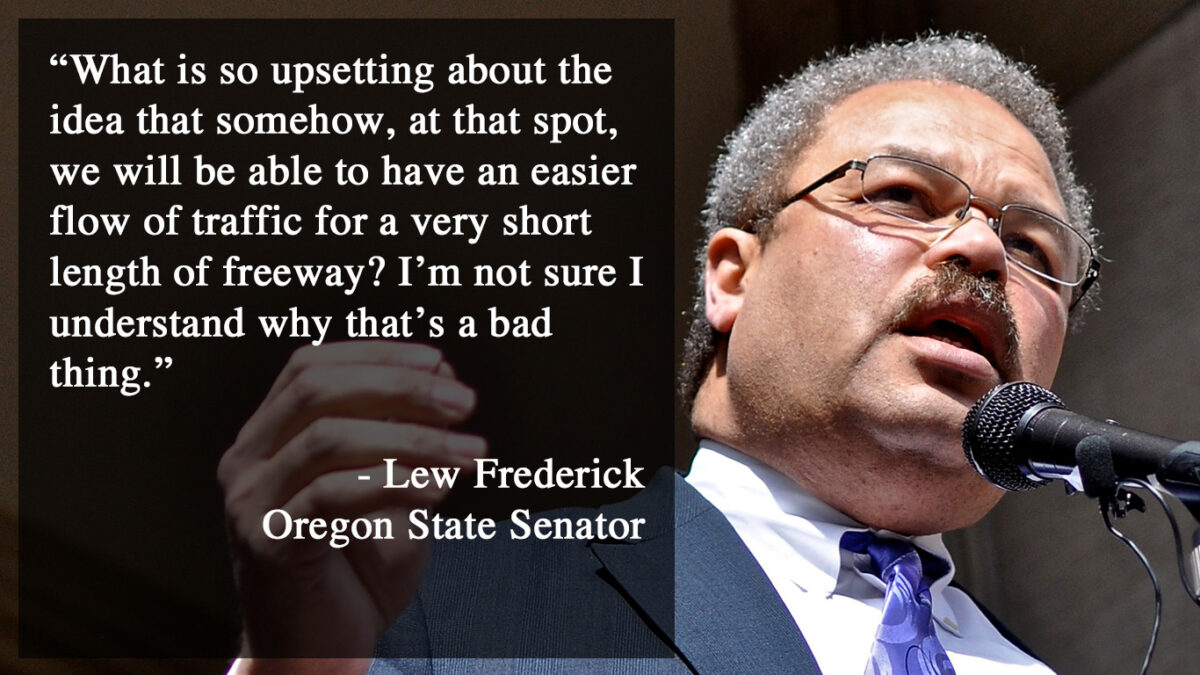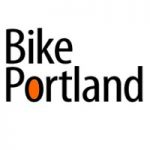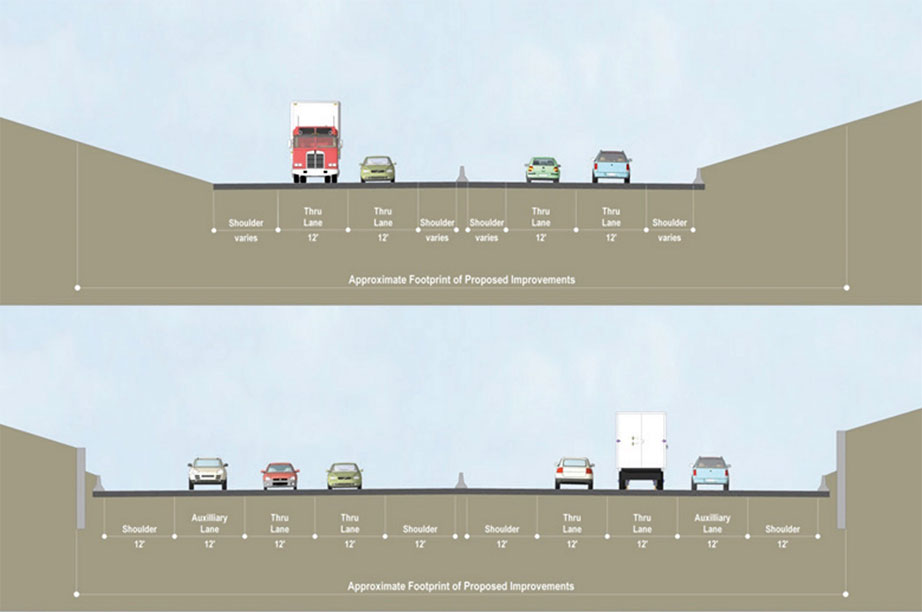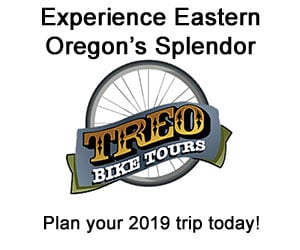
(Image of Lew Frederick by K. Kendall used under CC by 2.0)
The I-5 Rose Quarter project being planned by the Oregon Department of Transportation lies squarely in the district of Oregon State Senator Lew Frederick. With an official biography that says his legislative focus is on, “justice in public safety, education, and ‘quality of life’ issues,” some readers were surprised to find out he supports a project that will significantly widen Interstate 5 to accommodate more auto traffic in Portland’s central city.
I interviewed Sen. Frederick last week to learn more about his position. Below is a version of our conversation that’s been slightly edited for clarity.
Why do you support this project?
“This particular plan, I don’t think has as much of an impact on climate as some are making it out to be.”
“First of all, I recognize you have a particular point of view on this as well. I’m not expecting to convince you of my view. I support it primarily because it is a promise that was made to other people in the state of Oregon. In 2016 the Transportation Committee [which Frederick is a member of] went around the state and talked with people in 19 different places and heard about what people wanted in transportation. There were several things that came up: One thing they talked about was the bottleneck in the metro area. There were two particular spots: the 205 area between West Linn and Stafford Road, and the other one that everyone talked about was the ability to get people — and especially products, and produce — through the Rose Quarter area because it was a clear bottleneck.
So we said we’ll do something about the Rose Quarter area if you’ll tax yourselves, and we’ll have the ability to get it done. At least have some effect. There was no promise it would eliminate all of the congestion or anything like that. There were also promises to incorporate bicycle approaches, a promise to look at the congestion pricing, and a promise — one that was not part of the [2017] transportation package but that we are in middle of making some changes to — and that’s regarding diesel.
There was an expectation there would be a number of approaches for dealing with the Rose Quarter and one of the things was changing the entrance and exit ramps and the pass-through lanes. That’s one of the things that was asked for and agreed to by legislators around the state, not just the Portland area. It appears as though this is something that will have an impact [on congestion] and that’s the impact we wanted to have when we passed the transportation package.”
What have you heard from your constituents about the project?
“There are several groups of my constituents that have different approaches to dealing with this issue. Some have been given, frankly, misinformation about it. There’s a whole group of folks who were told that we’re somehow increasing the freeway by this incredible amount of new lanes. It’s not a whole group of new lanes, it’s entrance ramps and exit ramps, and a pass-through situation. It’s not putting in five lanes going to Vancouver. And it’s a small section of the freeway. But they were given misinformation about it in my view.
I’ve also had people who say they understand what this is set up to be. It’s not set up to be the end-all thing. They believe it will bring at least some change. So I’ve heard constituents on several different sides of the issue. Some people would like to have the money spent on high-speed rail. I’d like that too. But the money being brought in by gas taxes and other sources cannot be spent on rail.
There are people concerned about how close the freeway is to Tubman Middle School. I’m also concerned about that.
So I have a range of folks… There are some very vocal people who, frankly, believe this is the way to suddenly turn around everything that’s taking place regarding global warming, so you have that kind of constituency as well.”
Do you think that concern around climate change is valid?
“Yes it’s a valid concern. I think that this particular project will have a minimal impact on climate. I think it will have a greater impact, quite frankly, on the way we deal with the economy of Oregon. This project was not set up to try to deal with a major climate change issue. It was set up as a promise with the rest of the state that we’d do something about the bottleneck at the Rose Quarter, and that’s what it’s designed to do.”
Given the seriousness of the climate issue, don’t you think it’s better to err on that side than the economic one?
“[Chuckles] I think we have to figure out how we balance a lot of things. One of the things we need to understand as we look at the climate issues is that there is not, in my view, a valid way to say, ‘We decided we are going to ask you for growth; but we’re not going to do what you asked us to do regarding this particular place.’ I think this project is important. I think there are other approaches that we can take to deal with the climate issue that I think this project has a minimal impact on and we have much larger possible impacts by dealing with the diesel issues and some of the other plans that are around right now… This particular plan, I don’t think has as much of an impact on climate as some are making it out to be.”
Why not? Can you expand on that?
“Well, I have yet to hear from folks who are talking about the climate what their alternative is for dealing with the bottleneck at the Rose Quarter. I have not heard a valid answer for that. I’ve yet to see an alternative at this point that gets commerce and other traffic through I-5 and that we could work on right now… And I realize congestion pricing is one of those things that’s part of this whole package.”
Yes, congestion could have an impact, yet ODOT is very dismissive of it at this point. They say it’s a separate project that’s “years away”. Do you think congestion pricing should play a larger role?
“I think you’re mistaken on that. In every conversation I’ve had with anybody regarding congestion pricing — and congestion pricing has its own issues as well — but it’s clearly part of these discussions. The timing is a question I think; but congestion pricing is clearly part of the discussion. I’m not sure where you’re getting the idea that it’s not.”
[Note: Congestion pricing is not part of the I-5 Rose Quarter project. ODOT’s own materials make it clear tolls are years away. A recent ODOT video on tolling said it’s “years away at best.”]
What if we spend all this money to expand the freeway, then toll it, only to find we don’t need the extra capacity? Are you concerned it would be a waste of money?
“No I’m not. I think we need to do something as quickly as we can, physically, on the ground. I think we’ve got to do both at the same time. We can be looking at congestion pricing and getting a project done that we know will have at least a minimal impact on congestion.
I want to make it clear: I don’t think this one thing [freeway widening] is going to be the fix. There are other parts of it we need to look at. The congestion pricing in my view has its own problems. What’s the impact on the neighborhoods and surface streets? And the other thing is, quite frankly, who has the money to pay for that congestion pricing? If you are a low-income person and you’re driving an old car, what happens to you in terms of congestion pricing? Those are issues we also need to be dealing with.”
If your congestion pricing concerns could be allayed, would you support doing it sooner? Would you support a measure to not move forward with the Rose Quarter project until we have a congestion pricing pilot in place?
“I’m not interested right now on doing a delay on this project. I think that would be an issue we’d be dealing with later on when we start to ask the rest of the state to do other things with us or for us — things like schools and health care and housing. If we decide we’re not going to pay attention to the promise we made regarding this, I think that would come back to haunt us. I think congestion pricing is something I would support looking at and perhaps try to find a way to allay the fear and concerns about it; but we should continue the I-5 project.”
But wasn’t the promise to relieve the bottleneck, not specifically to widen the freeway? If congestion pricing could relieve the congestion, wouldn’t that fulfill the promise?
“I think what could come out of that is misunderstanding just how many different approaches are needed to deal with that bottleneck. The bottleneck is clearly a physical bottleneck. We need to find some way to deal what the physical bottleneck.”

Thanks for reading BikePortland.
Please consider a $10/month subscription or a one-time payment
to help maintain and expand this vital community resource.
What do you think about the fact that the project is strongly opposed by the Portland Public Schools Board, PBOT’s bicycle and pedestrian advisory committees, and several other groups?
“I haven’t talked with the school board folks. The city folks you talk about, I’m not surprised. I appreciate the bicycle folks, I appreciate the pedestrian folks as well; but I think this has an impact, and a much larger one than that particular area of the city. Again, I think this is part of a promise we have to deal with and a bottleneck that affects the whole state.”
One thing these groups are concerned about is ODOT’s obfuscation. They’ve been unwilling to say it’s a widening project or that it’s adding capacity; but the fact is, the freeway is getting substantially wider and according to ODOT’s own analysis, people will be able to travel through this area faster. So wouldn’t those two things increase capacity on the freeway?
“That certainly is the hope that it will increase some capacity. But it’s not like adding a full lane. Again, it disturbs me that you’re presenting it this way. We’re talking about entrance ramps and exit ramps. We’re not talking about an additional third or fourth lane that’s going to continue all the way up to Columbia Blvd or the river. This is a small section right there at the Rose Quarter. Characterizing it as somehow adding lanes, is not just a mistake, but a mischaracterization of what it’s about. The whole idea is to allow people to move through quicker. It’s not going to solve the whole problem but will certainly help make things smoother going through that area.”
But don’t you think it’s problematic that our state transportation agency denies it will add capacity when it clearly will?
“Let me ask you this question: What is the problem in terms of it adding some capacity at that spot? What is so upsetting about the idea that somehow, at that spot, we will be able to have an easier flow of traffic for a very short length of freeway. I’m not sure I understand why that’s a bad thing.”
Well there are two reasons it’s a problem: First, there’s a concern that ODOT isn’t being honest with the public and that they’re willfully hiding the impacts of their plans. The other thing is, it’s upsetting because making it easier for people to drive is a very problematic thing in light of the crisis of a changing climate, in light of concerns about emissions, in light of the fact that driving is the least efficient and most expensive way to get around…
“Yes they’re going to change the lanes to allow folks to move through that area… But the alternatives that we have right now — and it’s not congestion pricing by the way — in my view, this is one piece of the alternatives is to try to make it so things are moving through. One of the problems we have at that spot, because it’s a bottleneck, is you have cars stopped and you have people on idle and we don’t have an electric vehicle… I’m driving a Prius. I’d love to be able to afford an electric vehicle and the charging station in my house. But the fact is that we have a system right now that if we can start to adjust the kind of vehicles we’re traveling with, the kinds of power that’s used… We’re trying to do the cleanup of the diesel. I don’t see this small section of the freeway — and I’m going to stress that — making it a little less obstructed as somehow violating my basic concerns about what’s going on terms of climate change.
The money we have is devoted to the roads. It’s devoted to the roads by way of a statewide taxing system that we agreed to and that’s what I think we should follow up on.”
If we could spend the money on something else, would you support that?
“If we could, Yes. But we can’t. If I could take money from the prisons and put it into the schools. I’d do that. I’ve been suggesting high-speed rail for some time and trying to find some way to pay for it and encourage it. I think we need a high-speed rail system from Eugene to Vancouver BC. That’s what I’d like to see. If nothing else, a system from Vancouver, Washington to downtown Portland, that’s what I’d like to see.”
Do you worry that investing in the freeway system will erode support and demand for high-speed rail?
“No. I do not think that erodes it at all. I think in fact it may actually help it. I think if we get something done on the freeway, it adds to the idea that we are in fact serious about changing the transportation system.
I think by supporting this project, I’ll have the ability to go in and say, ‘OK, we now need to do something with high-speed rail,’ because I’ll be able to say, ‘Look, we’ve done this [freeway project] and now we need to do this next piece and we will have a great impact on the climate change.'”
Would you support a request for another 45-day comment period?
“Yes. I can’t see a big problem with being able to have more comment time.”
What about joining several groups, including the PPS School Board, to request completion of an Environmental Impact Statement?
“I would support an EIS, especially as it relates to Tubman. I don’t think that’s been done as well as it should be… But if the EIS is basically an attempt to try and stop the project — then let’s be honest about that. If you’re not trying to find a way to create a solid change in terms of the environment around there, and are just using the kids as a prop. That’s not OK.
I want to make it very clear we need to look at the environmental impact. We need to be looking at what we can do regarding diesel. I think diesel in that area along the entire I-5 corridor, not just for that particular spot. If we’re going to have an EIS just for Rose Quarter project, I think that’s a narrow approach. If the EIS is only defined as a strategy to try to stop the project, then just say so. Don’t say you’re so concerned about the kids. If the EIS is being set up just as a proxy, I’m not interested in that. I am interested in impacts of diesel fumes in that whole area, which has the highest asthma rates; but don’t use this as a proxy to delay the project. I won’t buy that line.”
Do you share concerns of the Albina Vision plan about the freeway lid designs?
“I have some concerns about the lids as well. How strong they are, where they’re placed. But let’s also be very clear about something here: the Albina Vision does not “recreate” the community that was once there. It will bring people back into that area; but there’s no way it can recreate what was once there. I don’t like folks using things as a proxy for other issues.”
Do you think the I-5 project will hurt or help make the Albina Vision a reality?
“In my view it will help Albina Vision becoming a reality because it creates an opportunity for making some physical changes in real time within a larger project. I think that gives us the opportunity to actually make some changes we would not otherwise be able to make. It’s going to be disruptive for sure; but if it’s disruptive and it opens up the possibility of connecting the Albina Vision — which is something that people have been talking about for a long time — and giving us a a reconnection with the river… I think the project on I-5 will provide an opportunity to get those kind of infrastructure things done as well.”
Thank you Senator Frederick for taking time to share your thoughts.
Have you shared your thoughts about this project with ODOT yet? The comment period ends at 5:00 pm on Monday, April 1st. You can submit an official comment by emailing info@i5RoseQuarter.org.
In related news, don’t miss Joe Cortright’s latest analysis where he reveals how the Columbia River Crossing is influencing this project. Also read OPB’s story: ODOT Used Long Dead I-5 Bridge Replacement To Plan Rose Quarter Upgrade.
— Jonathan Maus: (503) 706-8804, @jonathan_maus on Twitter and jonathan@bikeportland.org
Never miss a story. Sign-up for the daily BP Headlines email.
BikePortland needs your support.
The post Why does Oregon State Senator Lew Frederick support a freeway expansion in his district? appeared first on BikePortland.org.
from BikePortland.org https://ift.tt/2JJwX3Y


No comments:
Post a Comment